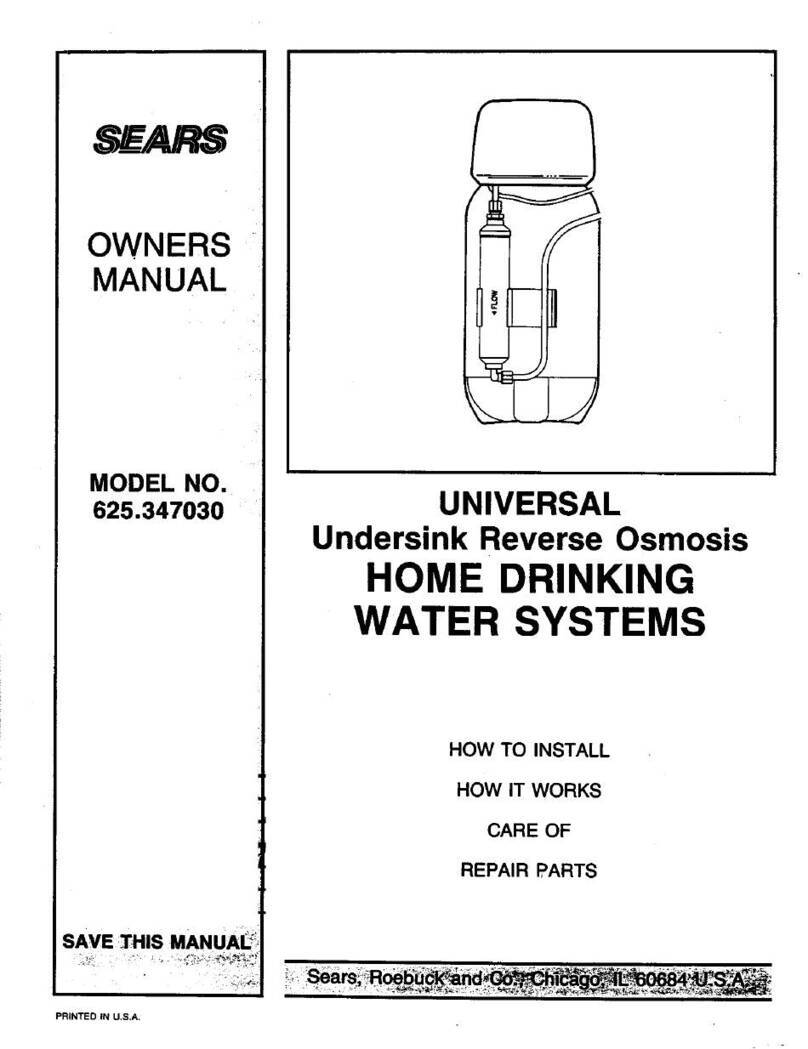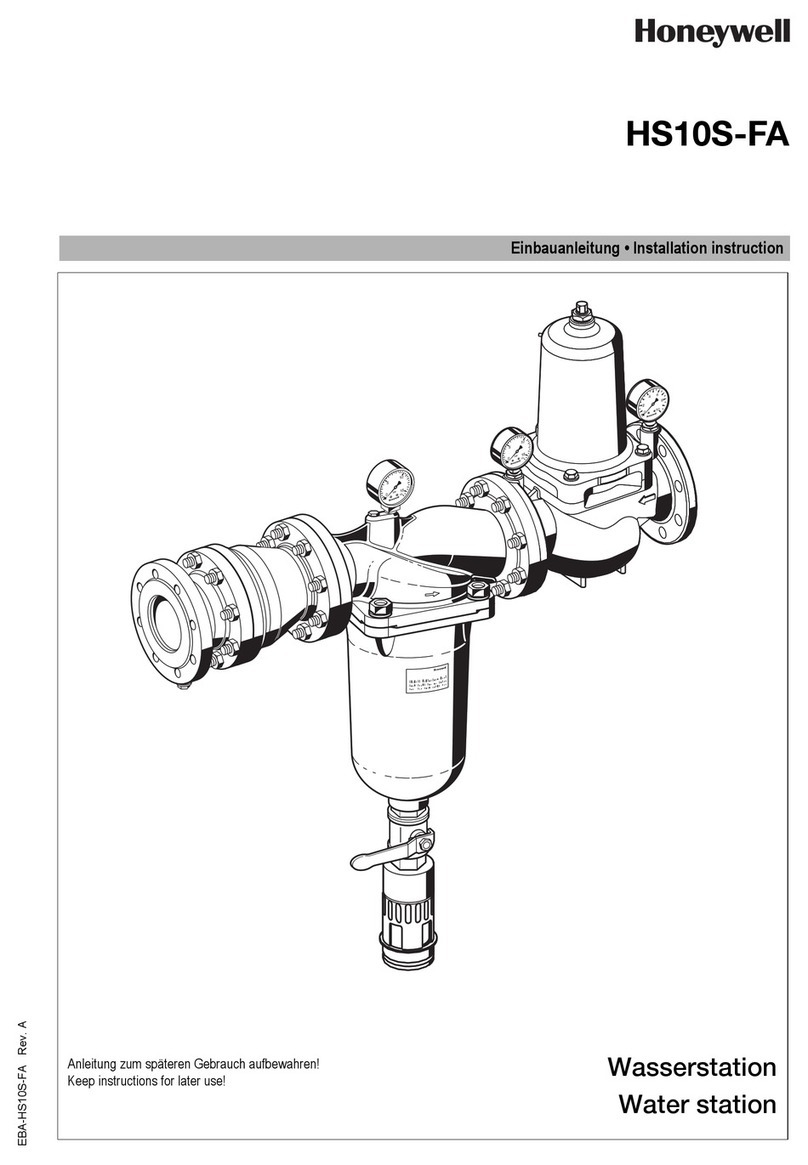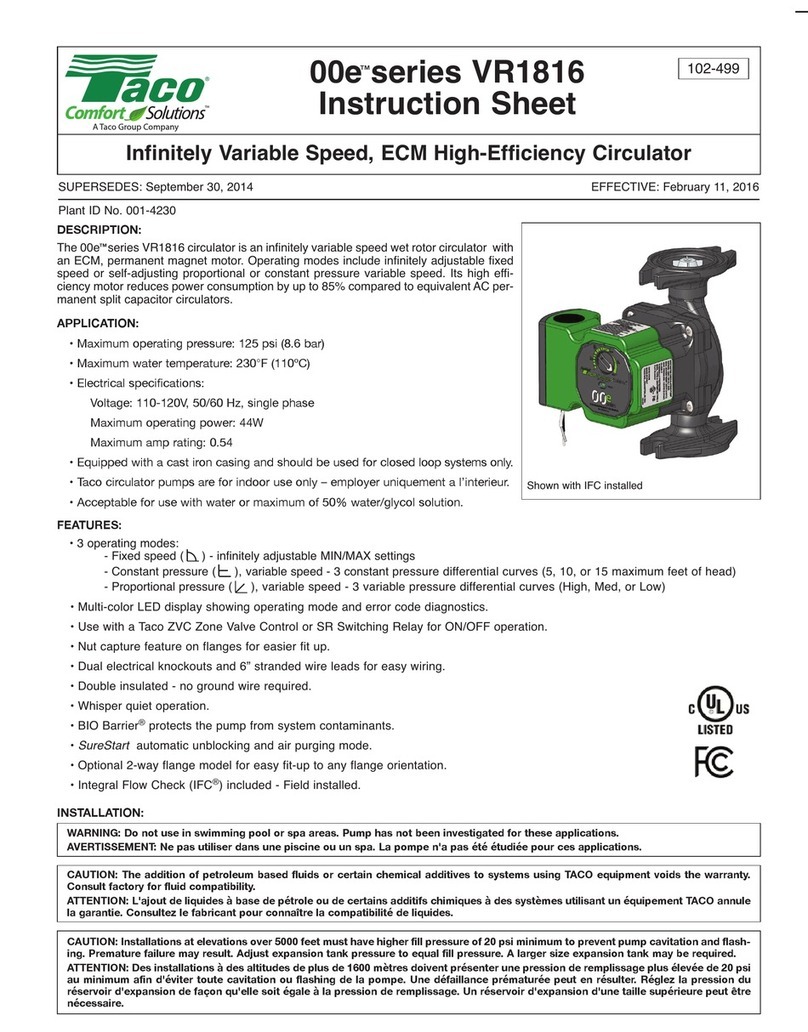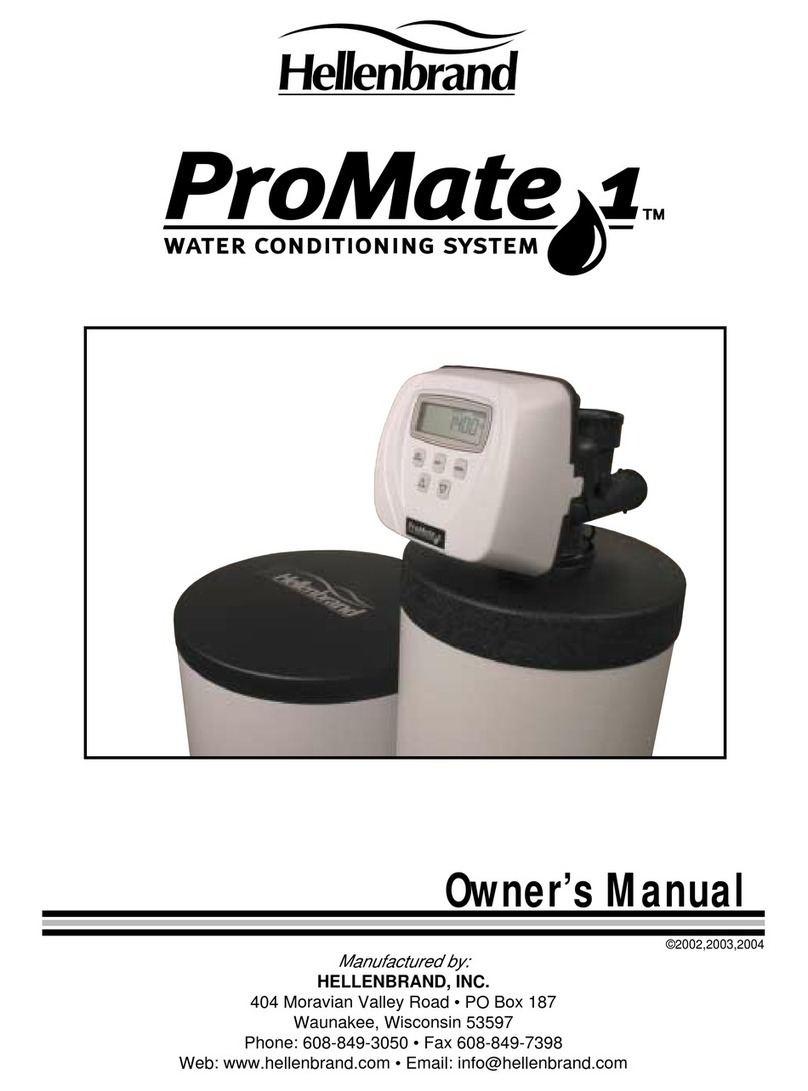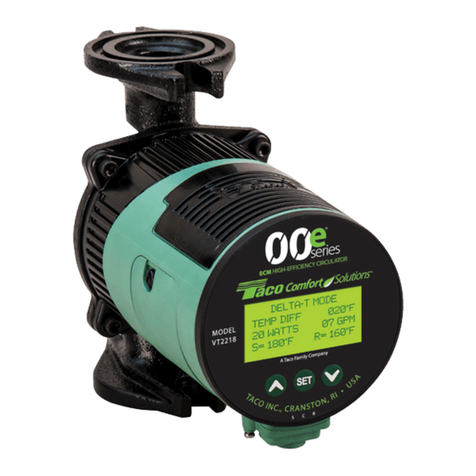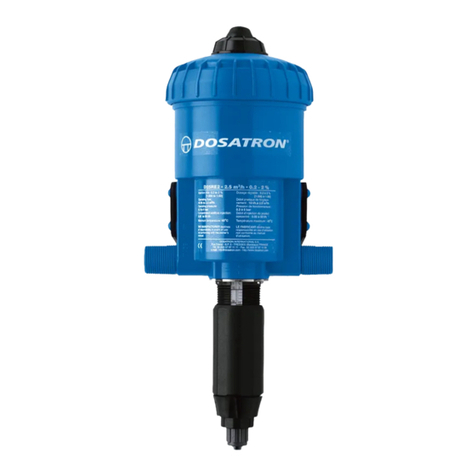Neslab RTE-Series User manual

WARRANTY
NESLAB Instruments, Inc. warrants for 12 months from date of shipment any NESLAB unit according to the
following terms.
Any part of the unit manufactured or supplied by NESLAB and found in the reasonable judgment of NESLAB
to be defective in material or workmanship will be repaired at an authorized NESLAB Repair Depot without
charge for parts or labor. The unit, including any defective part must be returned to an authorized NESLAB
Repair Depot within the warranty period. The expense of returning the unit to the authorized NESLAB Repair
Depot for warranty service will be paid for by the buyer. NESLAB’s responsibility in respect to warranty claims
is limited to performing the required repairs or replacements, and no claim of breach of warranty shall be
cause for cancellation or recision of the contract of sales of any unit.With respect to units that qualify for field
service repairs, NESLAB’s responsibility is limited to the component parts necessary for the repair and the
labor that is required on site to perform the repair. Any travel labor or mileage charges are the financial respon-
sibility of the buyer.
The buyer shall be responsible for any evaluation or warranty service call (including labor charges) if no
defects are found with the NESLAB product.
This warranty does not cover any unit that has been subject to misuse, neglect, or accident. This warranty
does not apply to any damage to the unit that is the result of improper installation or maintenance, or to any
unit that has been operated or maintained in any way contrary to the operating or maintenance instructions
specified in NESLAB’s Instruction and Operation Manual. This warranty does not cover any unit that has been
altered or modified so as to change its intended use.
In addition, this warranty does not extend to repairs made by the use of parts, accessories, or fluids which are
either incompatible with the unit or adversely affect its operation, performance, or durability.
NESLAB reserves the right to change or improve the design of any unit without assuming any obligation to
modify any unit previously manufactured.
THE FOREGOING EXPRESS WARRANTY IS IN LIEU OF ALL OTHER WARRANTIES, EXPRESSED OR
IMPLIED, INCLUDING BUT NOT LIMITED TO WARRANTIES OR MERCHANTABILITY AND FITNESS FOR
A PARTICULAR PURPOSE.
NESLAB’S OBLIGATION UNDER THIS WARRANTY IS STRICTLY AND EXCLUSIVELY LIMITED TO THE
REPAIR OR REPLACEMENT OF DEFECTIVE COMPONENT PARTS AND NESLAB DOES NOT ASSUME
OR AUTHORIZE ANYONE TO ASSUME FOR IT ANY OTHER OBLIGATION.
NESLAB ASSUMES NO RESPONSIBILITY FOR INCIDENTAL, CONSEQUENTIAL, OR OTHER DAMAGES
INCLUDING, BUT NOT LIMITED TO LOSS OR DAMAGE TO PROPERTY, LOSS OF PROFITS OR REV-
ENUE, LOSS OF THE UNIT, LOSS OF TIME, OR INCONVENIENCE.
This warranty applies to units sold in the United States. Any units sold elsewhere are warranted by the affiliated
marketing company of NESLAB Instruments, Inc. This warranty and all matters arising pursuant to it shall be
governed by the law of the State of New Hampshire, United States. All legal actions brought in relation hereto
shall be filed in the appropriate state or federal courts in New Hampshire, unless waived by NESLAB.

- 1 -
RTE-Series Refrigerated Bath/Circulator
Table of Contents
PREFACE Compliance ............................................................................................. 2
Unpacking............................................................................................... 2
Warranty ................................................................................................. 2
After-sale Support ................................................................................... 2
SECTION I
Safety Warnings................................................................................................. 3
SECTION II
General Information Description .............................................................................................. 4
Specifications.......................................................................................... 4
SECTION III
Installation Site.......................................................................................................... 5
Electrical Requirements .......................................................................... 5
Plumbing Requirements.......................................................................... 6
Fluids ...................................................................................................... 8
Filling Requirements ............................................................................... 8
Water Quality Standards and Recommendations ................................... 9
SECTION IV
Temperature Controller Start Up...................................................................................................10
Controller Keypad & Display....................................................................10
Changing a Value....................................................................................11
ControllerDisplays ..................................................................................11
Operator's Loop ......................................................................................12
Setup Loop..............................................................................................13
Error Messages.......................................................................................15
Autorefill(Optional) .................................................................................16
High Temperature/Low Liquid Level Safety.............................................17
9-Pin Accessory Connectors...................................................................18
SECTION V
Maintenance Service Contracts....................................................................................19
Condenser ..............................................................................................19
Reservoir Cleaning.................................................................................. 20
Algae.......................................................................................................20
AdditionalLoops......................................................................................21
CalibrationLoop ......................................................................................22
CalibrationProcedure .............................................................................22
SECTION VI
Troubleshooting Checklist .................................................................................................24
Service Assistance and Technical Support .............................................24
SECTION VII
Programming Software/
RS232 Communication .............................................................................................25
WARRANTY

- 2 -
Preface
Compliance Products tested and found to be in compliance with the requirements defined
in the EMC standards defined by 89/336/EEC as well as Low Voltage Direc-
tive (LVD) 73/23/EEC can be identified by the CE label on the rear of the unit.
The testing has demonstrated compliance with the following directives:
LVD, 73/23/EEC Complies with UL 3101-1:93
EMC, 89/336/EEC EN 55011, Class A Verification
EN50082-1:1992
IEC1000-4-2:1995
IEC1000-4-3:1994
IEC1000-4-4:1995
For any additional information refer to the Letter of Compliance that shipped
with the unit (Declaration of Conformity).
Unpacking Retain all cartons and packing material until the unit is operated and found to
be in good condition. If the unit shows external or internal damage, or does
not operate properly, contact the transportation company and file a damage
claim. Under ICC regulations, this is your responsibility.
Warranty Units have a warranty against defective parts and workmanship for one year
from date of shipment. See back page for more details.
After-sale Support NESLAB is committed to customer service both during and after the sale. If
you have questions concerning the operation of your unit, contact our Sales
Department. If your unit fails to operate properly, or if you have questions
concerning spare parts or Service Contracts, contact our Customer Service
Department. Before calling, please obtain the following information from the
unit's serial number label:
- BOM number ______________________________
- Serial number______________________________

- 3 -
Section I Safety
Warnings Make sure you read and understand all instructions and safety precautions
listed in this manual before installing or operating your unit. If you have any
questions concerning the operation of your unit or the information in this
manual, contact our Sales Department.
Performance of installation, operation, or maintenance procedures
other than those described in this manual may result in a hazardous
situation and may void the manufacturer's warranty.
Transport the unit with care. Sudden jolts or drops can damage the
refrigeration lines. The units weigh approximately: RTE-111, 86 pounds
(390 kilograms); RTE-211, 99 pounds (45 kilograms); RTE-221, 106
pounds (48 kilograms). Units should be transported with equipment
designed to lift these weights.
Observe all warning labels.
Never remove warning labels.
Never operate damaged or leaking equipment.
Never operate the unit without bath fluid in the bath.
Never use pure ethylene glycol as a bath fluid. Above 80°C the user is
responsible for the fluid used.
For 220 - 240 volt units supplied without a line cord, use a harmonized
(HAR) grounded 3-conductor cord, type H 0 5 V V - F , with conductors
listed below. A suitable cord end is required for connecting to the
equipment (see unit socket) and must terminate with an IEC approved
plug for proper connection to power supply.
RTE-111 and RTE-211 Nominal 1.0 mm2cross section rated 10 Amps
Unit Socket: IEC - 320 C13
RTE-221 Nominal 1.5 mm2cross section rated 16 Amps
Unit Socket: IEC - 320 C19
Always turn off the unit and disconnect the line cord from the power
source before performing any service or maintenance procedures, or
before moving the unit.
Always empty the bath before moving the unit.
Never operate equipment with damaged line cords.
Refer service and repairs to a qualified technician.
In addition to the safety warnings listed above, warnings are posted
throughout the manual. These warnings are designated by an exclamation
mark inside an equilateral triangle with text highlighted in bold print. Read and
follow these important instructions. Failure to observe these instructions can
result in permanent damage to the unit, significant property damage, personal
injury or death.

- 4 -
RTE-111 RTE-211 RTE-221
-25°C to +150°C -23°C to +150°C
±0.01°C
500
1705
15 lpm at 0' (0 M)
0 lpm at 16' (4.9 M)
Section II General Information
Description The RTE-Series Refrigerated Bath/Circulators are designed to provide
temperature control for applications requiring a fluid work area or pumping to
an external system.
Units consists of a non-CFC air-cooled refrigeration system, circulation pump,
seamless stainless steel bath, work area cover, and a temperature controller.
Specifications
Temperature Range1
Temperature Stability2,3,4
Cooling Capacity2,5
Watts
BTU/H
Pump Capacity
Heater (Watts)
60 Hz Models
50 Hz Models
Bath Work Area
(L x W x D)
Inches
Centimeters
Bath Volume
Gallons/Liters
Case Dimensions
(H x W x D)
Inches
Centimeters
Power Requirements6
800
1000 800
1000
4 3/4 x 8 x 6
12.1 x 20.3 x 15.3 9 1/4 x 10 x 6
23.5 x 25.4 x 15.2 9 1/4 x 10 x 9
23.5 x 25.4 x 22.9
1.9/7.0 3.2/12.25 5.4/20.5
25 x 10 5/16 x 15 7/8
63.5 x 26.2 x 40.3 25 x 12 3/8 x 18 3/8
63.5 x 31.4 x 46.7 27 7/8 x 12 3/8 x 18 3/8
70.8 x 31.4 x 46.7
1600
1800
115 V, 60 Hz
220/240 V, 50 Hz
1. Low end temperature for 50Hz units is -18°C, -23°C and -21°C respectively.
2. Specifications listed for units operating at +20°C bath temperature, +20°C (+70°F) ambient,
with tap water as bath fluid.
3. For operation below 0°C, covering the bath work area may improve stability.
4. For some applications, agitation and stability above ambient may be improved by
connecting a small length of hose between the pump connections on the rear of the unit.
5. 50 Hz RTE-111 units have a 375 watt cooling capacity.
6. Control transformer fusing - 115VAC units = (T=Time Delay) 500mA 250V 5 x 20mm (Qty 1),
220VAC units =[T=Time Delay] 250mA 250V to 5 x 20mm (Qty 2).
Bussman fusing part numbers: 500mA fuse = Bussman S504-500mA
250mA fuse = Bussman S504-250mA

- 5 -
Section III Installation
Site The indentations on the unit's sides are designed to function as handles. Lift
the unit by the handles and locate it on a sturdy work area. Ambient tempera-
tures should be inside the range of +50°F to +80°F (+10°C to +27°C).
Never place the unit in a location where excessive heat, moisture, or
corrosive materials are present.
The unit has an air-cooled refrigeration system. Air is drawn through the
front panel and discharged through the rear panel. The unit must be
positioned so the air intake and discharge are not impeded. A minimum
clearance of 12 inches (30 centimeters) at the front and rear of the unit is
necessary for adequate ventilation. Inadequate ventilation will reduce
cooling capacity and, in extreme cases, can cause compressor failure.
Excessively dusty areas should be avoided and a periodic cleaning schedule
should be instituted (see Section VI, Cleaning).
The unit will retain its full rated capacity in ambient temperatures up to
approximately +75°F (+24°C). Above +75°F, derate the cooling capacity 1%
for every 1°F above +75°F, to a maximum ambient temperature of +95°F.
In terms of Celsius, derate the cooling capacity 1% for every 0.5°C above
+24°C, to a maximum ambient temperature of +35°C.
Electrical
Requirements Line voltage may be easily accessible inside the pump/control box.
Always unplug the unit prior to removing pump/control box cover.
Refer to the serial number label on the rear of the unit to identify the specific
electrical requirements of your unit.
Ensure the voltage of the power source meets the specified voltage, ±10%.
The unit construction provides extra protection against the risk of electric
shock by grounding appropriate metal parts. The extra protection may not
function unless the power cord is connected to a properly grounded outlet. It
is the user's responsibility to assure a proper ground connection is provided.
For 220 - 240 volt units supplied without a line cord, use a harmonized
(HAR) grounded 3-conductor cord, type H 0 5V V -F, with conductors
listed below. A suitable cord end is required for connecting to the
equipment (see unit socket) and must terminate with an IEC approved
plug for proper connection to power supply.
RTE-111 and RTE-211 Nominal 1.5 mm2cross section rated 16 Amps
Unit Socket: IEC - 320 C19
RTE-221 Nominal 1.0 mm2cross section rated 10 Amps
Unit Socket: IEC - 320 C13

- 6 -
Plumbing
Requirements
Ensure the unit is off before connecting tubing to the unit.
Hose Connections
The pump connections are located at the rear of the pump box and are labelled
PUMP INLET and PUMP OUTLET. These connections are bent upward so the
recirculating fluid will drain back into the reservoir when the hoses are discon-
nected. Both connections are capped with stainless steel serrated plugs.
The pump lines have ¼" MPT for mating with standard plumbing fittings. For
your convenience stainless steel adapters, ¼" FPT to3/8" O.D. serrated fitting,
are provided. (To assure proper fit, they should be installed using 1½ turns of
Teflon®tape around the threads.)
Flexible tubing, if used, should be of heavy wall or reinforced construction.
Make sure all tubing connections are securely clamped. Avoid running
tubing near radiators, hot water pipes, etc. If substantial lengths of tubing
are necessary, insulation may be required to prevent loss of cooling capacity.
Tubing and insulation are available from NESLAB. Contact our Sales
Department for more information (see Preface, After-sale Support).
It is important to keep the distance between the unit and the external system
as short as possible, and to use the largest diameter tubing practical. Tubing
should be straight and without bends. If diameter reductions must be made,
make them at the inlet and outlet of the external system, not at the unit.
If substantial lengths of cooling lines are required, they should be pre-filled
with bath fluid before connecting them to the unit. This will ensure that an
adequate amount of fluid will be in the bath once it is in operation.
Pumping
The pump is designed to deliver a flow of 15 liters per minute (4 gallons per
minute) at 0 feet head. To prevent external circulation, the PUMP INLET and
PUMP OUTLET lines on the rear of the unit are capped. The caps must be
removed when external circulation is required.
To properly secure external hose connections to the unit, wrap Teflon®tape
around the pipe line threads before installation. Once the hose connections
are made, the hoses must be properly plumbed to an external system.
It is
important the bath is not in operation until all plumbing is complete.
NOTE: To increase agitation in the bath when not circulating externally,
connect a short loop of hose between the inlet and outlet lines.
If the bath is not used for external circulation or incresed agitation, make sure
the stainless steel caps are in place prior to operating the bath.

- 7 -
Circulating to an open container
A stainless steel leveling device is available to aid circulation to an open
vessel. Contact our Sales Department for more information (see Preface).
Support the leveling device over the open container with a ringstand. Stagger
the tubes in the leveling device so one tube is submerged in the vessel fluid,
and the other tube is level with the fluid surface. Connect the deeper tube to
the PUMP OUTLET and the shorter tube to the PUMP INLET.
Adjust the flow rate using the accessory flow control valve connected to the
PUMP OUTLET, or by partially restricting the outlet tubing. When properly
adjusted, the pump inlet will draw an occasional air bubble to prevent over
flow, and the pump outlet will force fluid through the submerged tube to
prevent aeration of the vessel.
To avoid siphoning the bath work area when the unit is shut off, lift the
leveling device out of the vessel and above the level of the unit.
Circulating through two closed loops
The pump can be used to circulate through two closed loop systems.
Connect the shortest practical length of flexible tubing from the PUMP
OUTLET to the inlet of external system #1. Connect the outlet of system #1
directly into the bath work area. Connect tubing from the bath work area to
the inlet of system #2. Connect the outlet of system #2 to the PUMP INLET.
Bath (Rear View) Open Container
Outlet Inlet
Levelling
Device
System #1
System #2
Bath
Work Area
Pump Box
Bath (Top View)

- 8 -
Drain
Ensure the temperature of the bath fluid is safe before draining the unit.
The unit is equipped with a drain located at the back of the unit at the base of
the bath. The drain has ¼" MPT and is capped with a stainless steel plug. To
drain the reservoir simply remove the cap.
To assure proper fit when replacing the cap, be sure to line the threads with
1½ turns of Teflon® tape.
Fluids
Never use flammable or corrosive fluids with this unit.
The selected fluid must have a viscosity of 50 centistokes or less at the
lowest operating temperature.
Filtered tap water is the recommended fluid for operation from +8°C to +80°C.
See Water Quality Standards and Recommendation on the next page.
For operation from -30°C to +8°C, a50/50 mixture, by volume, of tap water
and laboratory grade ethylene glycol is suggested.
Above +80°C and below -30°C, the user is responsible for fluids used.
Never use pure ethylene glycol as a bath fluid. Above 80°C the user is
responsible for the fluid used.
Filling
Requirements The bath work area has a high and low level marker to guide filling. The
markers are 1 inch horizontal slits located in the center of the stainless steel
baffle separating the work area and the pump assembly. The correct fluid
level falls between these two markers. The heating and cooling coils will be
exposed and may become damaged if the correct fluid level is not provided.
When pumping to an external system, keep extra fluid on hand to maintain
the proper level in both the circulating lines and the external system.
Never run the unit when the work area is empty.

- 9 -
Unfavorably high total ionized solids (TIS) can accelerate the rate of galvanic
corrosion. These contaminants can function as electrolytes which increase
the potential for galvanic cell corrosion and lead to localized corrosion such
as pitting which can be observed at the studs and on the outside surface of
cooling coils. Eventually, the pitting will become so extensive that the coil will
leak refrigerant into the water reservoir.
For example, raw water in the U.S. averages 171 ppm (as NaCl). The recom-
mended level for use in a water system is between 0.5 to 5.0 ppm (as NaCl).
Recommendation: Initially fill the tank with distilled/deionized water. Do not
use untreated tap water as the total ionized solids level may be too high.
Maintain this water quality at a resistivity of between 1 to 10 megohm-cm
(compensated at 25°C) by using a purification system. Although the initial fill
may be as high as 10 megohm-cm (compensated at 25°C), the desired level
for long time usage is 1 to 3 megohm-cm (compensated at 25°C).
The above two recommendations will reduce the electrolytic potential of the
water and prevent or reduce the galvanic corrosion observed.
Water Quality Standards
and Recommendations Permissible (PPM) Desirable (PPM)
Microbiologicals
(algae, bacteria, fungi) 0 0
Inorganic Chemicals
Calcium <40 0.6
Chloride 250 <25
Copper 1.3 1.0
Iron 0.3 <0.1
Lead 0.015 0
Magnesium <12 0.1
Manganese 0.05 <0.03
Nitrates\Nitrites 10 as N 0
Potassium <20 0.3
Silicate 25 <1.0
Sodium <20 0.3
Sulfate 250 <50
Hardness 17 <0.05
Total Dissolved Solids 50 10
Other Parameters
pH 6.5-8.5 7-8
Resistivity 0.01* 0.05-0.1*
* Megohm-Cm (Compensated at 25°C)
15.00
10.00
3.00
1.00
0.10
0.05
Resistivity (megohm-cm @ 25°C)
Not Recommended, Increasingly Corrosive
Operations with Stainless Steel Systems
Operations with
Mixed Metals
Copper/Brass/
Stainless Steel CONSULT MATERIALS ENGINEER
10 20 30 40 50 60 70 80
Water Quality Considerations
°C

- 10 -
Section IV Temperature Controller
Start Up Before starting the unit, check all electrical and plumbing connections and
make sure the work area has been properly filled with bath fluid.
To start the bath press the I/O circuit breaker on the side of the control box to
the I (power on) position. The pump will start and the controller will display the
temperature of the fluid in the reservoir
The controller's COOL and HEAT indicators show the status of the refrigeration
system and heater. The COOL indicator is lit when the refrigeration system is
removing heat from the cooling fluid. The HEAT indicatoris lit when the heater
is on. The HEAT indicator flashes when the heater is pulsating. A balance
between COOL and HEAT controls the temperature.
NOTE: Below 50°C the refrigeration system is on unless the setpoint is more
than 2°C above the bath temperature. This allows for rapid heat up. Above
50°C the refrigeration system is off unless the setpoint is more than 2°C
below the bath temperature. This allows for rapid cool down.
Controller Keypad
& Display
The digital controller controls temperature using a PID (Proportional-Integral-
Derivative) algorithm. It is designed with self-diagnostic features and easy to
use operator interface.
NEXT ENTER
Use this key to scroll forward through the menus and also to accept and save
changes.
YES,
This dual purpose key is used to answer Yes to Y/N questions or to increment
numerical values upward for setting numeric values.

- 11 -
NO,
This dual purpose key is used to answer No to Y/N questions or to decrement
numerical values downward for setting numeric values.
Changing a Value The YES key increments the value. The NO key decrements the value.
The display will flash as soon as either key is depressed, and will continue to
flash until the NEXT ENTER key is pressed twice to accept the new value.
The new value will not be used by the controller until the NEXT ENTER key is
depressed twice and the display stops flashing.
NOTE: If the ENTER key is not depressed twice within 10 seconds, the
controller will time out and the new value will not be accepted. The controller
will revert to the previous setpoint value.
The controller will not allow you to enter a value above the maximum
(+150°C) or below the minimum (-25°C).
Controller Displays An alphanumeric display presents numeric readings of various operating
conditions within the bath. Display function is selected by pressing the appro-
priate keys to move through a menu of available information.
The controller hasseveral loops. The Operator's Loop displays the bath
temperature and is used to change the setpoint, see page 12. The Setup Loop
is used to adjust the controller's PID parameters, select the internal or remote
sensor, and set the high/low temperature limits. It is also used to select RS232
operation. See page 13-14. The Setup Loop can be accessed from the
Operator's Loop by pressing and holding the key combinations shown on
Figure 1 on the next page.
When the controller is first powered up it enters the Operator's Loop. The
display will indicate the bath temperature.
NOTE: If altering any settings in the various loops, should you desire to return
to the temperature display and abort any changes, keep pressing theNEXT
ENTER until the display readsStor, then press NO.

- 12 -
Figure 1 Operator's Loop
XXX.X = Reservoir Fluid Temperature
SP = Setpoint
Operator's Loop When the controller is first powered up it enters the Operator's Loop, displaying
reservoir fluid temperature. Press the NEXT ENTER key to view the setpoint.
SP displays the controller setpoint. The display will flash between SP and the
actual setpoint number. Use the YES/NO keys to change the setpoint value.
Once the desired setpoint is displayed, press the NEXT ENTER key twice.
NOTE: If the bath is controlled via RS232 communications, the setpoint can
not be changed from the keypad.

- 13 -
Setup Loop The Setup Loop is used to adjust the controller's PID parameters, select the
internal (1) or remote (2) sensor, and set the high/low temperature limits, and
to select RS232 operation.
Enter the Setup Loop from the Operator's Loop by pressing and holding the
NO key, then press the NEXT ENTER key. Use the YES/NO keys to adjust
the values. Press the NEXT ENTER key twice to accept the new value.
While in the Setup Loop, if any key is not pressed during a one minute time
span, the controller will automatically return to the Operator's Loop tempera-
turedisplay.
NOTE: If the unit exceeds either temperature limit, the appropriate error
message will flash, see page 15. The unit will not shut down (unless the
temperature exceeds the high temperature cutout setting, see page 17).
tUnE = Tune
HEAt = Heat PID Parameters
Pro = Proportional Band (factory value 1.3%)
Int = Integral (factory value 0.5 repeats per minute)
dEr = Derivative (factory value 0.02 minutes)
rtd = Sensor
1 = Internal
2 = Remote
Hit = High Temperature Limit
Figure 2 Setup Loop (1 of 2)

- 14 -
Figure 2 Setup Loop (2 of 2)
Hit = High Temperature Limit
Lot = Low Temperature Limit
r232 = RS232 Protocol
bAUd = BAUD rate (factory value 9600)
dAtA = Data Bits (factory value 8)
StoP = Stop Bit (factory value 1)
PAr = Parity (factory value NONE)
Stor = Store

- 15 -
Error Messages Error Action
Er00: ROM Checksum
Er01: RAM Test Failed
Er03 Keypad Test Failed
Er04-13: Interrupt Error
Er14: SynchronousError
Er15: Asychronous Error
Er16: BadCalibration
Er19: Low Temp Limit
Er21: High Temp Limit
Er23: RTD2 Shorted
Er24: RTD2 Open/Not Installed
Er25: RTD1 Shorted
Er26: RTD1 Open
Er34: High Temperature Cutout
NOTE: Errors 1 through 16 will lockup the controller keypad.

- 16 -
Autorefill
(Optional) An optional autorefill device is designed to maintain the correct level of
cooling fluid in the reservoir. The device consists of a float switch and a
solenoid valve. If the cooling fluid level falls, the float switch will open the
solenoid valve and allow make-up fluid to fill the reservoir. Once the cooling
level reaches the proper level, the float switch will rise and the solenoid valve
will close.
The plumbing connection for the autorefill device, labeled WATER INLET, is
located on the rear of the autorefill assembly. The connection is 3/8 inch OD
stainless steel. Remove the nut and install the tubing from your make-up fluid
source. Reinstall the nut and tubing on to the connection.
Tubing is available from NESLAB. Contact our Sales Department for more
information (see Preface, After-sale Support).
The autorefill device requires its own source of electrical power. The connec-
tor for the line cord (provided with the assembly) is also located on the rear of
the autorefill device. The connector is labelled POWER.
Autorefill Device

- 17 -
High Temperature/
Low Liquid
Level Safety To protect your application, the adjustable High Temperature/Low Liquid
Level Safety (HIGH TEMP/LOW LEVEL) ensures the heater will not exceed
temperatures which can cause serious damage to your unit. A single tem-
perature sensor, located on the heater coils in the bath, monitors both condi-
tions. A High Temperature/Low Liquid Level fault occurs when the tempera-
ture of the sensor exceeds the set temperature limit.
In the event of a fault, the unit will shut down. The cause of the fault must be
identified and corrected before the unit can be restarted.
The safety is not preset and must be adjusted during initial installation.
To set the safety, locate the HIGH TEMP/LOW LEVEL SAFETY adjustment
dial on the right side of the pump box. Turn the dial fully clockwise and press
the red RESET switch located next to the adjustment dial. NOTE: On units
without a reset switch turn the I/O switch off then back on.
Start the unit. Adjust the setpoint for a few degrees higher than the highest
desired fluid temperature and allow the bath to stabilize at the temperature
setpoint. Turn the HIGH TEMP/LOW LEVEL SAFETY dial counter-clockwise
until you hear a click and the unit shuts down. The yellow FAULT LED on the
temperature controller will light to indicate a fault has occurred.
Cool the bath and then, without moving the adjustment dial, press the red
RESET switch or turn the I/O switch off then back on.
NOTE: The safety switch has a temperature range of 50°C to 180°C. The
minimum high temperature safety setting is 50°C.
High Temperature/Low Liquid Level Safety
(Some units do not have a reset switch.)

- 18 -
9-Pin Accessory
Connector
RS232 Pin Connections
Pin # Function
1 No connection.
2 TX = Transmitted data
3 RX = Received data
4 No connection
5 GND = Signal ground
6 No connection.
7 CTS = Clear to send
8 RTS = Request to send
9 No connection
Hardware Internal Connector Mating Connector
AMP Part# 745491-2 AMP Part# 745492-2
Remote Sensor Connections
Pin # Function
1 3-wire RTD connection A
2 No connection
3 No connection
4 3-wire RTD connection B
5 No connection
6 No connection.
7 No connection
8 No connection
9 3-wire RTD connection C
Hardware Internal Connector Mating Connector
AMP Part# 745491-2 AMP Part# 745492-2
5 4 3 2 1
9 8 7 6
RS-232
5 4 3 2 1
9 8 7 6
The unit is equipped with two female 9-pin D-connectors located on the rear of
the control box. One is used for RS232 communication, the other is used with
an optional remote sensor.
REMOTE
SENSOR

- 19 -
Section V Maintenance
To avoid electrical shock, disconnect the mains cord prior to removing
any access panels or covers.
Service Contracts NESLAB offers on-site Service Contracts that are designed to provide
extended life and minimal down-time for your unit. For more information,
contact our Service Department (see Preface, After-sale Support).
Condenser For proper operation, the unit needs to pull substantial amounts of air
through a condenser. A build up of dust or debris on the fins of the
condenser will lead to a loss of cooling capacity.
Periodic vacuuming of the condenser is necessary. To access the condenser
the front grille must be removed.
The unit must be turned off before the front panel is removed.
RTE-111 units have a one-piece grille assembly. Pull forward to remove.
RTE-211 and RTE-221 units have a two piece grille assembly. First remove
the left (blue-colored) section by simply pulling it forward. Pull forward on the
remaining (white-colored) section to remove it.
The frequency of cleaning depends on the operating environment. After initial
installation, we recommend a monthly visual inspection of the condenser.
After several months, the frequency of cleaning will be established.
This manual suits for next models
3
Table of contents
Popular Water System manuals by other brands
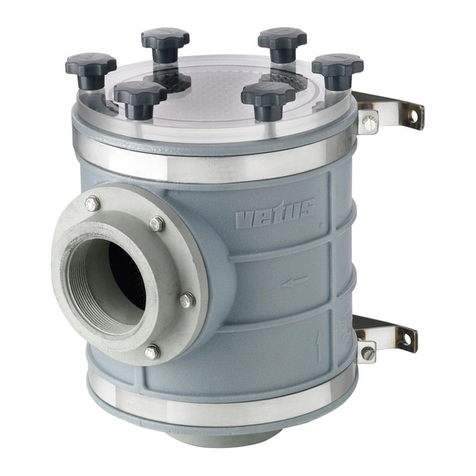
Vetus
Vetus 1320 installation instructions
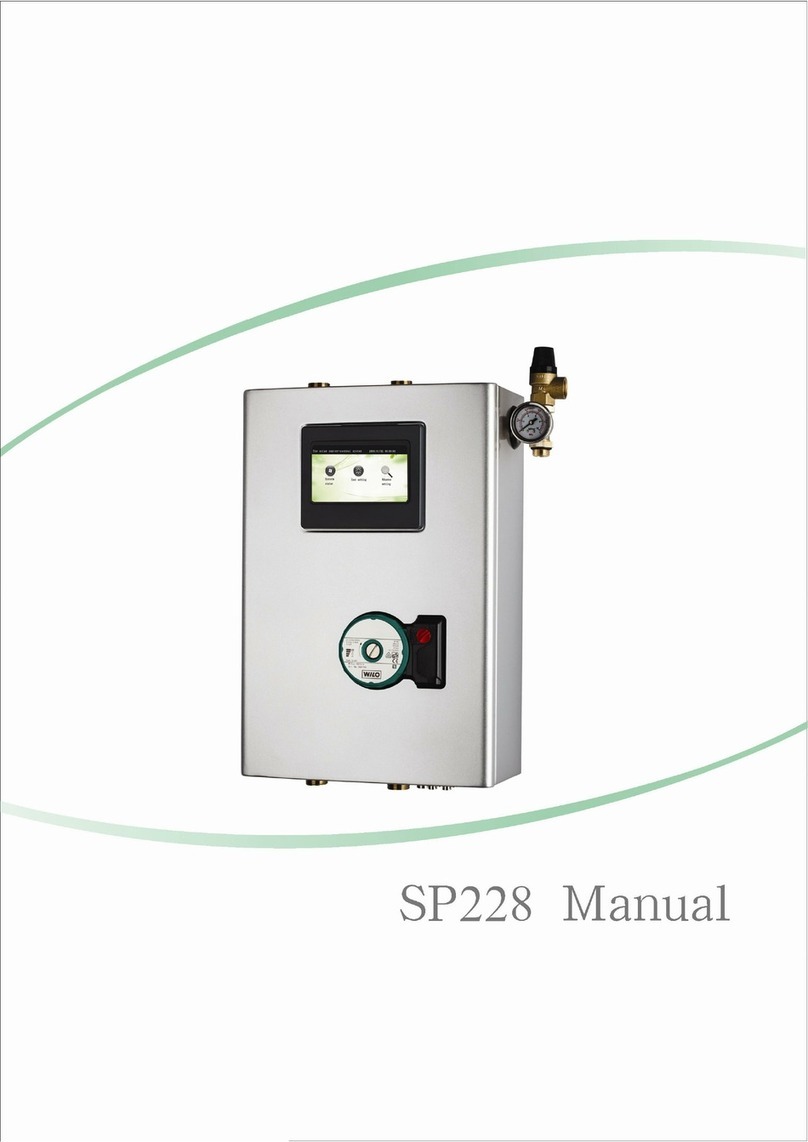
Zhejiang
Zhejiang SP228 manual
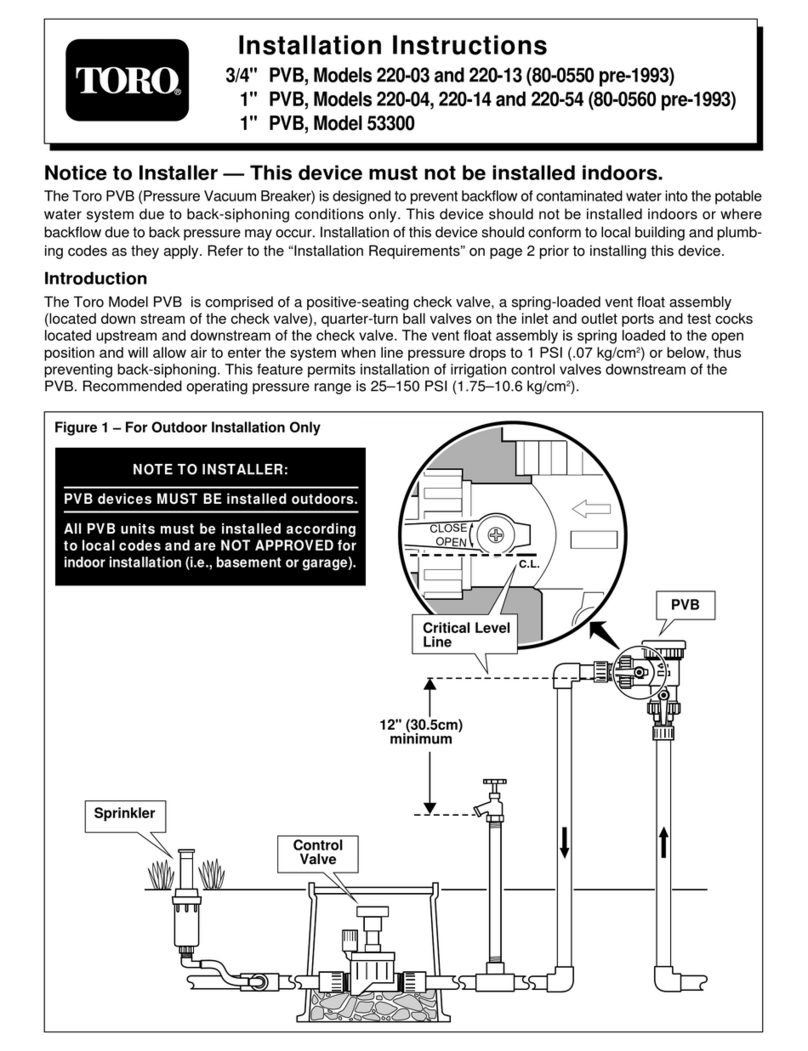
Toro
Toro 220-03 installation instructions
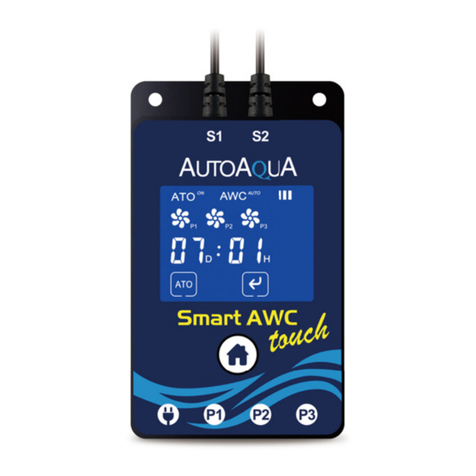
AutoAqua
AutoAqua Smart AWC touch SAWC-200P manual
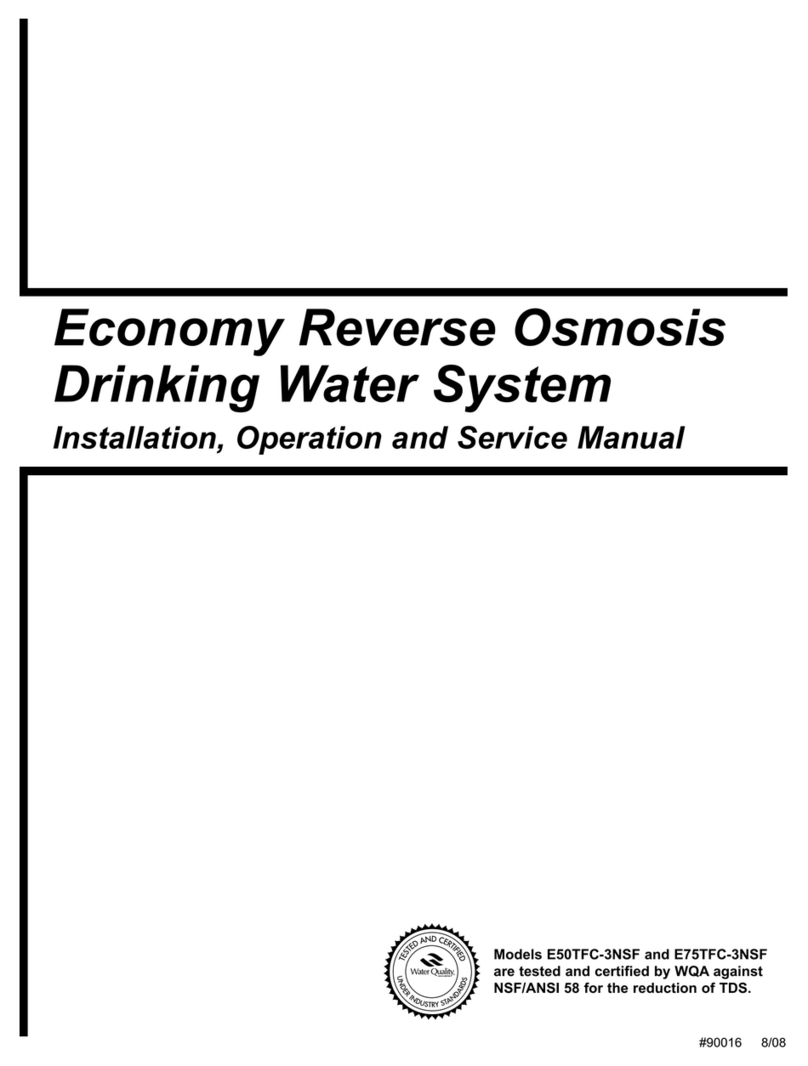
WaterGroup
WaterGroup E50TFC-3NSF Installation, operation and service manual
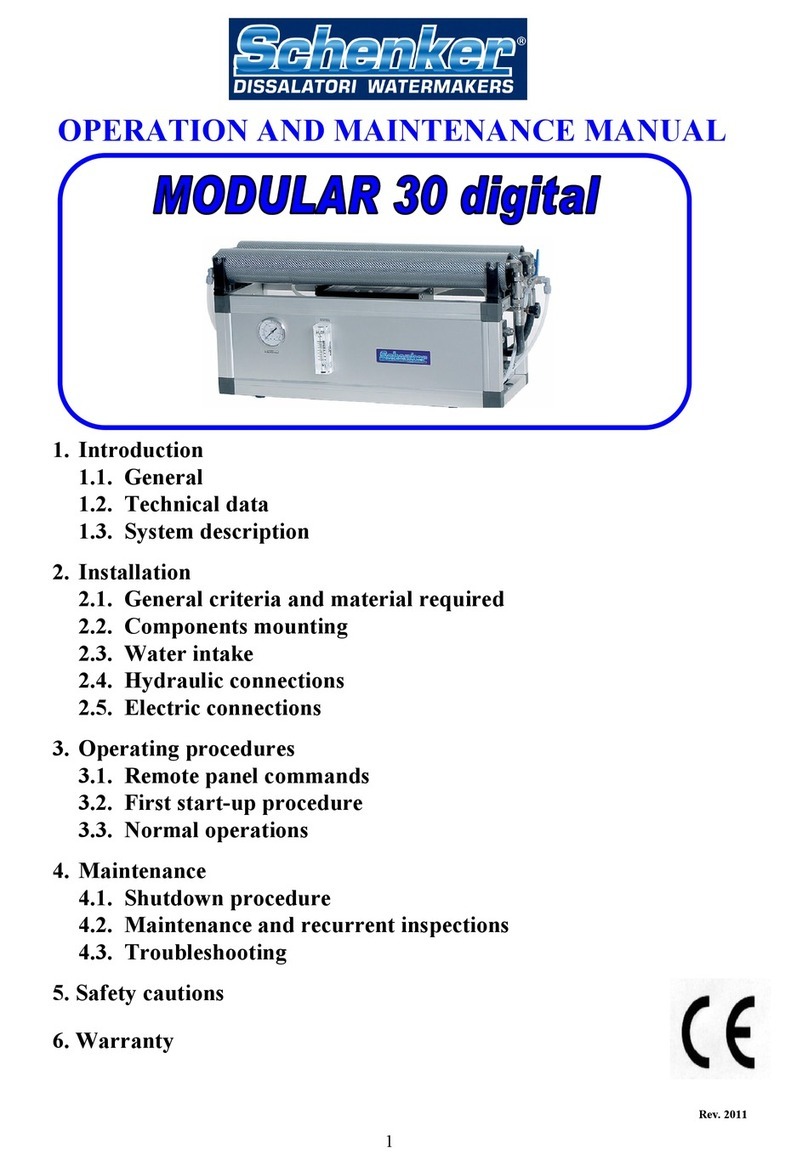
Schenker
Schenker MODULAR 30 digital Operation and maintenance manual
